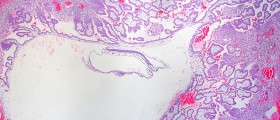
Fallopian tubes are integral part of reproductive system in women and these structures are known to connect ovaries and the uterus. There are 2 fallopian tubes in every woman’s body and they are some 10 to 12cm long. Primary function of fallopian tubes is transport of the egg released from ovary to the uterus.
Causes of Blocked Fallopian Tubes
Infection or inflammation and subsequent swelling are the most common causes of blockage of fallopian tubes. This may happen in patients suffering from salpingitis, pelvic inflammatory disease (shortened as PID) or in women suffering from some sexually transmitted diseases (STDs). Other causes of blocked fallopian tubes may involve conditions such as: surgery in pelvis, tubal ligation procedures or adhesions because of some previous surgeries performed on fallopian tubes. Women with history of uterine infection, appendicitis, peritonitis or women who had ectopic pregnancy before may also suffer from blocked fallopian tubes.
If the blood fills fallopian tubes, women could also develop this problem. Yet another possible explanation for blocked fallopian tubes is condition called hydrosalpinx. Blockage of fallopian tubes in this condition is caused either by water or by pus, which fill these structures.What Symptoms Occur in Blocked Fallopian Tubes?
In most cases, women suffering from blockage of fallopian tubes don’t have some significant or any symptoms or troubles, which makes this problem hard to diagnose. Signs and symptoms of this condition depend on the cause of the problem. Infections of fallopian tubes may result in painful sexual intercourse, while hydrosalpinx is usually seen as abdominal pain. Painful menstruation may be associated with pelvic inflammatory disease and blockage of fallopian tubes.
Effects on Pregnancy and Treatment
Blocked fallopian tubes may be the cause of female infertility, if both of the tubes are blocked. Blockage of these tubes will prevent the egg reaching the uterus and getting fertilized. Partial blockage of fallopian tubes may be responsible for miscarriage or ectopic pregnancy, as well as some irregular menstrual cycles and pain during menstruation.
To diagnose this problem, doctors commonly use X rays and hysterosalpingography. Treatment depends on the cause of blockage. Obstruction of fallopian tubes can be resolved using laproscopic pregnancy, while salpingectomy may be used to remove a part or complete blocked fallopian tube. Women who want to become pregnant may receive IVF (in vitro fertilization) treatment after salpingectomy. IVF is also recommended for blockage of the fallopian tube caused by hydrosalpinx. After one or more surgical procedures, patients are usually given some antibiotics, in order to avoid complications.












_f_280x120.jpg)



Your thoughts on this
Loading...